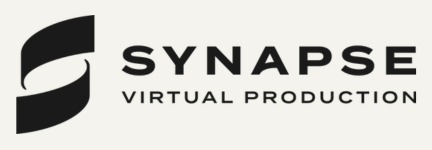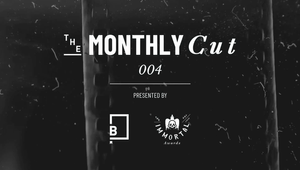
Riches at the End of the Rainbow: Colour Grading with Depth and Dynamism

In the fast-paced world of advertising, every second of screen time is a chance to captivate the audience. With brands fighting for differentiation and deeper engagement, colour grading has become more than just a finishing touch – it’s a powerful storytelling tool. The right grade can add depth, dynamism, and a unique visual identity that sets a campaign apart.
“The most memorable adverts are often the most visually striking,” says Benjamin Rozario, colourist at GATE+, a Tag company, “and colour grading plays a crucial role in crafting attention-grabbing visuals.”
What Benjamin loves most about grading commercials is the ability to dive into the details. “For me, it’s about getting the most out of the image, really leaning into the light and art direction that has been captured on set and creating something unique that supports the product or service being advertised.
“It’s also about going the extra mile. Whilst grading, I’m usually asking myself, ‘can we push this any further?’ to which I’ll make suggestions to the client. I love having creative discussions in the suite and feel it’s in these moments where the magic happens. That push and pull dialogue is invaluable and can really take a grade to the next level.”
When it comes to pushing things further, it seems that it can also be applied to the job description itself in recent years, as Brian Higgins, creative director at Flavor (a collective under Cutters Studios) tells LBB. “As schedules and budgets tighten, the lines between colour grading, compositing, and finishing have blurred. What would have been done by three separate people a decade ago is now often done by just one or two. So in addition to creating looks that contribute to the story the clients are trying to tell, I’m often a visual problem solver.”
“It’s no longer just about making things look beautiful,” agrees Paul Yacono, senior colourist at Harbor LA, “it’s about creating a clear, distinctive visual identity for each brand and the story they are trying to tell.
“The rise of streaming, social media, and content saturation has pushed brands to stand out visually. This means we’re being asked to make bolder, more deliberate choices and use colour not just to enhance the image but to evoke a clear emotion or create a signature visual world. I think the best advertising work today feels less like a ‘commercial’ and more like a mini film or art piece. Colour is a huge part of that shift.”
Tricks of the Trade
To grab viewers’ attention fast, colourists have a whole arsenal of tricks up their sleeve. “You don’t have time to build mood slowly, so the grade has to do a lot of heavy lifting from the first frame,” shares Paul.
“If I’m grading something that’s meant to feel nostalgic, I’m immediately pushing into warmer tones, softer highlights, and a grainier texture. If it’s meant to feel premium, I’m looking for cleaner skin tones, richer blacks, and defined contrast. The goal is always to get the viewer to feel something, and fast.
“I also like using unexpected colour choices to reframe how a viewer experiences a moment. Pushing the highlights toward cyan instead of neutral white or letting shadows fall into deep greens can completely shift the mood of a scene. Small, bold choices like that help commercials feel more cinematic and less formulaic.”
Toby Tomkins, creative director of commercial colour at Harbor in the UK notes that “colour is one of the fastest ways to create an emotional connection. I think it can be as powerful as music. You can set the tone of an ad in a single frame just by the way you push the grade. Warm, golden hues can instantly evoke nostalgia or comfort. Deep, rich blacks and cooler tones can create intrigue or a sense of luxury. Bright, punchy primaries can give energy and excitement.
“But it’s also about contrast – not just between colours, but between light and dark, saturation and desaturation. A well-placed colour accent can draw the eye exactly where you need it to go, and that’s crucial in advertising, where every second counts. Doing this naturally or in a 'cinematic' or authentic way is the challenge. This is probably what separates the best colourists from the rest.”
“We often also want to subtly integrate and pop a brand’s colours to help the viewer associate the spot with them more, or emphasise parts of the frame we want the viewer to look at,” adds Brian.
“We might use a change in the grade to convey a change in mood or the passage of time. In my recent collaboration with WeatherTech which aired on Super Bowl LIX, I made sure the blues of the California skies were rich and consistent, and that the tones of the cars, the talent’s wardrobe, the product, and the giant explosions all really popped!”
Szymon Jaskuła, compositing lead at Juice, is “all for expressive, attention-grabbing grading”, but has noticed a more subtle approach emerging in markets like Europe and the US. “Meanwhile, regions like Asia and the Middle East still embrace theatrical-inspired, high-impact looks.”
“I do think colour grading in the advertising world is evolving and the visual language is changing," Benjamin comments. "There are more grade briefs coming through which are seemingly influenced by narrative colour palettes as opposed to the conventional bright highlights and full clarity frames of traditional commercials.
“In my experience, creatives are open to exploring the more nuanced adjustments such as soft highlights and leaning into analogue film attributes like rich colour density and greater colour separation. I see this coming through in all types of commercials but particularly in fashion. And I’m here for it!”
Above all, Szymon stresses that “grading should tell a story. But in today’s world, it’s rarely an art form in itself anymore. Instead, it’s a supporting act, there to enhance, not to lead, which is a shame, because when used right, colour grading can be as powerful as the script itself.”
The Role of Cinema
When it comes to what sets the trends, Szymon credits blockbuster films. “When ‘Amélie’, ‘The Matrix’, ‘The Lord of the Rings’, or more recently ‘Dune’, ‘Blade Runner 2049’ or ‘Mad Max: Fury Road’ hit, the commercial world followed suit. Sure, there are brilliant exceptions in advertising, but the real seismic shifts? Those come from the cinema.”
Toby reports that the lines between advertising and high-end narrative filmmaking are increasingly blurred, with brands wanting “richer, more nuanced colour work that feels premium, and there's that word again – authentic.
“Colour grading in advertising has always been about evoking emotion, grabbing attention and reinforcing brand identity. But in recent years it has had to evolve with the explosion of online video content. Advertising has had to become more engaging, authentic and more visually sophisticated. We’re also no longer mostly grading for linear TV spots, we’re still grading for high-end cinematic spots in cinemas but also dynamic social content, in-store screens and everything in between.”
Brian adds, “Feature and episodic colourists have a larger palette to work with given the advent of HDR, which still isn’t really a thing in advertising as you can’t broadcast it over the air yet. They also have a vast amount more footage to deal with than commercials colourists. While the same tools are available to both, feature colourists generally don’t have an hour to spend on a single shot, whereas in advertising it’s quite common to pile on power windows until a shot is just right.
“I also think that while we grade in a dark suite with D65 lighting and a properly calibrated monitor, the nature of the ad approvals process means ad grades are judged and approved in much wider viewing conditions. We have to skew brighter than colourists whose clients are approving their work in a darkened grading theater. As such, we tend to get fewer complaints about our work being too dim. A silver lining!”
On the topic of film vs advertising, Szymon explains that “there are two reasons why ads might seem more dynamic than film. First, sheer volume – ads flood the market at a rate that dwarfs theatrical releases, so the odds of stumbling upon something fresh are simply higher. Second, the happy accident factor: sometimes directors, DPs, or colourists take bold creative swings, not out of vision, but out of inexperience. What looks daring and unconventional might just be the product of uncertainty.”
Paul sums up, “In both worlds, the goal is ultimately the same, which is to evoke emotion and enhance the story. The difference is just in scale. In a film, you have two hours to pull someone into a world. In a commercial, you have 30 seconds. But the approach to colour can often be similar. I’ll still use colour to drive mood, signal time of day, or reinforce the emotional arc, whether it’s a feature or a short ad.
“What’s interesting is that advertising has started borrowing a lot from cinema, especially when it comes to visual texture and mood. You see a lot of high-end commercials now that feel like short films, with nuanced, atmospheric colour work. On the flip side, some cinema is starting to adopt the bold, high-impact aesthetic you’d typically associate with ads. The two are feeding off each other creatively, and that’s pushed grading to a really exciting place.”
Tim Masick, senior colourist at Company 3 New York, says, “While the trend of filming out to capture analog aesthetics seems to be receding slightly – as we have powerful digital tools to emulate those characteristics – the increased collaboration early in the process is inspiring.
"Conversations before shooting, testing looks, and creating preliminary LUTs, similar to the film world, are becoming more common in commercials. This pre-production involvement allows for a unified vision from the outset, leading to a more cohesive and ultimately better final product where everyone is aligned and building towards a shared visual goal."
Real, Raw, Imperfect
Looking at the biggest developments in colour grading over the past few years, Szymon highlights accessibility as the “game changer”.
“With tools like DaVinci Resolve breaking down barriers, high-end grading is no longer locked behind expensive hardware and software. Now, anyone with a laptop can step into the game, opening the doors for fresh talent and new visual ideas. The mystery is gone, colour correction isn’t some esoteric dark art anymore.”
Brian comments, “It used to cost over a million bucks to build a Spirit room, which limited access to clients who could afford the often eye-watering hourly rates. The software is now a lot less expensive, too. DaVinci used to cost in excess of 250,000 US dollars. It’s now $299. The drop in cost has meant a flood of new talent entering the colour grading market. That influx of talent combined with the move to software-based grading has given rise to more varied, complex looks, and much more precise control over the final image.
“With the recent rise of machine learning-based tools, colourists can now quickly isolate objects in their footage for further manipulation. I have a keyer that will automatically isolate various features of the talent’s face. Mattes for eyes, lips, teeth, T-zone, etc. are all a button-click away! Things that used to be labour-intensive or impossible to do now take minutes. We can craft images for our clients that are more refined in less time than ever before.
“Also, lower budget work can look better than it ever has before,” he continues. “Though, just as anyone can buy a chainsaw from the hardware store, it does help if you know what you’re doing. Without a good eye and an understanding of colour theory, colour science, and cinematography, you’re more likely to do more harm than good to your clients’ projects.”
On this point, Szymon comments, “With Instagram filters blowing up and Lightroom becoming super popular turning everyone into a photographer with their iPhones, people started realising that the original ‘raw’ photo is just a starting point. Once that clicked, colour grading became way more approachable for the average Instagram user. And because of that, a whole wave of artists emerged, people who probably wouldn’t have even known this field existed before.
“But here’s the catch: if everyone is referencing everything, what happens to originality? When all roads lead to the same visual trends, we risk turning creativity into an echo chamber. And that’s not a bad thing. More people experimenting with colour means fresh perspectives, new aesthetics, and an ever-expanding creative landscape. Yes, referencing can lead to repetition, but it also fuels innovation. The challenge now? Making sure all that accessibility doesn’t flatten everything into sameness.”
While accessibility is helping many achieve high-quality work for a lower price, Paul notes one of the biggest shifts is a return to imperfection. “For a long time, advertising had this hyper-clean, glossy look, but now there’s a huge appetite for texture, grit, and naturalism. Brands want their content to feel more ‘real’ and less manufactured, so we’re bringing in more grain, film emulation, and unexpected colour shifts. I love the use of extreme contrast and heavy mood.”
Tim is seeing a move towards richer, deeper blacks. “This isn't about crushing detail but achieving an image with more substance and nuance in the darker areas. For a long time, we saw a prevalence of lifted, milky blacks, which often felt less appealing. Now, there's a refreshing inclination towards a more photographic quality in the blacks, adding depth and sophistication when clients embrace it.”
A trend for authenticity means “many brands today want storytelling that feels real and emotionally engaging,” Toby states. “There’s a real appetite for imperfection through textures, film emulation, and more natural palettes that feel honest and relatable. That doesn't mean it isn't bold or striking, but more like a film where the boldness of the look is inherent to the overall look rather than individually treated shots that stand on their own.
“HDR has redefined what’s possible for high-end narrative productions, allowing for richer contrast, deeper blacks, and more luminous and saturated colours. HDR is no longer just for HETV – and the VOD platforms all support it – so I'm hoping we start to work in HDR for more advertising. I'm shocked brands haven't caught on to it as I think they would love the extra latitude it brings and can really make their spots stand out on these platforms. The challenge is making sure it still translates well across all platforms and formats.”
Rethinking Colour
Thinking about what brands should know about getting the most out of colour grading in 2025 and beyond, Paul’s advice is to be bold. “The brands that stand out are the ones that take risks with colour. Whether it’s committing to a distinctive palette, embracing texture, or doing something visually unexpected, that’s what gets remembered.
“When brands approach colour like it’s the final touch instead of part of the creative process, they miss out on a huge opportunity to make their work stand out. Trust your creative team. The most iconic ad campaigns happen when brands give their colourists and filmmakers room to experiment and take risks.”
Tim also wishes more brands understood colour grading’s power to support the narrative. “Too often, brands might inadvertently hinder the process, for instance, by not communicating preferences regarding elements like lens flares, which are incredibly difficult to remove in post-production. Similarly, a common request to avoid anything 'too dark' can clash with scripts explicitly set at night. Brands must align their creative choices from the initial concept to post-production.
“My advice for 2025 is to involve colour grading discussions earlier in the process and ensure key decision-makers are available throughout. Most importantly, make visual decisions that serve the story and the core idea rather than chasing trends. Colour is a potent storytelling tool; use it intentionally.”
Brian hopes to see a “push for colourists to be able to collaborate with the director and cinematographer in addition to the agency creative team. Also, if you’re putting a bunch of CG into your spot, it’s much better if you can delay your final colour grade until after the VFX team is done. It’s often difficult with deadlines and everyone’s schedules, and might involve some back and forth, but it’s absolutely worth it.”
Toby agrees that “too often, colour grading is treated as a final tweak rather than a core part of the creative process. The best results happen when colourists are brought in early, working with the director, cinematographer, and art department to develop a coherent colour strategy from the start. It's rare but if tests can be shot and a LUT made for the shoot we can make sure that everyone is working toward the same end goal. This is maybe the biggest difference between high-end narrative work and advertising. I'm hoping we bridge that gap this year.”
He continues, “My advice to brands in 2025 is to be intentional with colour. Embrace authenticity. Don’t chase trends, focus on what makes your brand unique in terms of tone and let that drive the colour language. Don't be myopic when it comes to the grade by focusing on brand colours, use colour to push forward the emotion and tone of the work. And trust your colourist! We’re here to help you tell the most visually compelling story possible and we love doing it.”
And for Szymon, a focus on brands building their own LUTs is the way forward. “The boldest brands will be the ones that carve out a distinct, recognisable visual voice. And if they do? Next time we sit down for an interview, we’ll have some damn good ads to talk about.”















